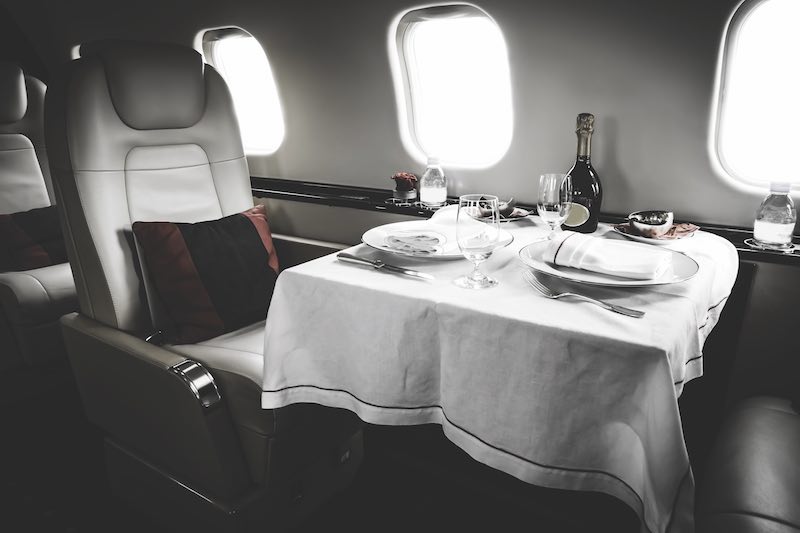
In the past, demand for private air travel was largely driven by the dreary experience of flying with commercial airlines. By contrast, private aviation offers frustrated flyers greater convenience, time savings, security, and many other “quality of life” benefits. In the current pandemic, however, health and welfare have risen to the top of this list of benefits, spawning what can only be described as an avalanche of interest in private air travel.
But the choice of private air travel leads to a further question: What type of private air travel investment is right for you? Fractional ownership? A jet card program? Or perhaps on demand charter may be your best bet? It is important to keep in mind that private aviation is not one-size-fits-all. The solution that worked for your friend or colleague is not necessarily going to be right for you. (Nor is the one being touted by a sales rep trying to meet a quota.)


When discussing private air travel options with clients, we begin by asking several important questions, among them:
- What is your budget?
- How often do you fly?
- Where and when do you fly?
- How far in advance do you plan your trips?
- How many passengers and how much luggage do you take?
- Do you prefer to fly on a fleet managed by a single operator?
- Do you have specific aircraft preferences?
- What is the best use of your capital?
- Can you take advantage of depreciation tax deductions?
Your responses to these and other questions serve as a blueprint for determining the type of jet program that will best suit your individual needs, lifestyle, and budget.
The general rule of thumb that passes for common wisdom is that if you fly between 50 and 400 hours per year, your best option may be fractional ownership, which involves owning a share of an aircraft that a single operator manages as part of a fleet. If you fly less than 50 hours per year, you may be better off with a jet card or “pay as you go” charter, and if you fly more than 400 hours annually, you may consider buying a whole aircraft. However, these “rules” are only the starting point for our analysis.

In addition to flying at least 50 hours per year (the minimum size of most fractional shares), other factors that militate in favor of fractional ownership are:
- You fly predominantly within the fractional program’s primary service area (so that you won’t routinely incur extra charges for your preferred trips.)
- You don’t fly predominantly on high usage travel days like major holidays (when your flight can be delayed and you’re more likely to fly on a charter aircraft because all the fleet aircraft are in use.)
- Most of your flights will be one hour or more (because the fractionals charge a minimum of one hour, even if your flight is shorter.)
- You expect your flying to be fairly constant over the next several years (because if you misjudge how much you fly, you may buy too many hours that likely will be wasted or, if you buy too few hours, you’ll have to supplement later with another investment.)
- There is an aircraft model in the fractional fleet that suits your needs (because you’re not going to be happy if your aircraft can’t make your favorite trip without a fuel stop, can’t hold your ski equipment or golf gear, and can’t land at the closest airport.)
- You are prepared to make a fairly substantial capital investment (because you’re buying a share in an actual aircraft.)
If your travel profile and investment preferences satisfy these and certain other criteria, fractional ownership may be the way to go. If, however, you like the idea of flying on a well-managed fleet of aircraft, but you fly less than 50 hours per year, or you prefer to conserve your capital, and are willing to pay a higher hourly rate to avoid a long term commitment, a jet card offered through a fractional program may better suit your needs.
To be sure, fractional jet card programs charge hourly rates that are significantly higher than those of established charter operators. Indeed, you should consider that this may be the most expensive way to fly privately.


If your profile otherwise fits within the parameters for a fractional jet card, but you’re amenable to flying through a network of charter operators that have been approved by a reputable safety rating service like ARG/US or Wyvern, you may realize some cost savings by utilizing a charter jet card service. These services generally do not own or operate aircraft. Rather, they make arrangements with independent operators to service your flights. You have a limited right to specify the type and vintage of the aircraft on which you’ll fly, which may vary widely, but you should realize some cost savings over fractional jet card programs.
If your travel profile and investment preferences don’t vibe well with the fractional ownership model or jet card offerings—whether fractional or charter—you may want to look at traditional charter, which offers a “pay as you go” option with no commitment beyond each individual flight that you schedule. Charter can be a good option if your travel profile looks like this:
- You fly roundtrips on the same day (so that you minimize deadhead costs.)
- You make travel plans well in advance (so that we can thoroughly investigate the market.)
- We can identify reputable and safe charter operators near your home base who fly aircraft that satisfy your needs and who have the aircraft inventory to deliver reliable service and availability when you need it.
- Your usage may vary substantially over time, so that “pay as you go” charter is better for you than locking into a program with a “use it or lose it” commitment.
 As is often the case for our clients, you may find that there is not a simple match between your needs and the available options. In such cases, we may recommend a combination of investments that satisfies all your needs in the most cost-effective way. For example, you may fly mostly one hour flights for business but longer flights for family vacations. In that case, a fractional share in a light jet or a turboprop that provides depreciation deductions may service your business needs, while a charter jet card program utilizing a mid-size jet may be the way to go for your family ski trip to Aspen and your trip with your golfing buddies to Florida.
As is often the case for our clients, you may find that there is not a simple match between your needs and the available options. In such cases, we may recommend a combination of investments that satisfies all your needs in the most cost-effective way. For example, you may fly mostly one hour flights for business but longer flights for family vacations. In that case, a fractional share in a light jet or a turboprop that provides depreciation deductions may service your business needs, while a charter jet card program utilizing a mid-size jet may be the way to go for your family ski trip to Aspen and your trip with your golfing buddies to Florida.
Your goal should be to purchase maximum flight time on aircraft that best fit your needs from reliable and financially stable companies at a minimum cost. Making the wrong choice can cost you hundreds of thousands, if not millions, of dollars. Making the right choice can free you from the flight delays, intrusive security, and horrendous service that characterizes the commercial airline experience in a way that does nothing less than change your life.

Author James D. Butler is an attorney and CEO of Shaircraft Solutions – a Maryland based consulting firm advising individuals and businesses on investments in private air travel for over twenty years. A foremost private aviation authority, Mr. Butler has in-depth knowledge of the full spectrum of today’s private aviation options, including fractional ownership, jet card programs, and charter, and also specializes in fractional share valuation disputes. Shaircraft’s clients range from business executives and retirees to family offices and professional athletes. Mr. Butler can be reached directly at [email protected] or (301) 652-9885.

